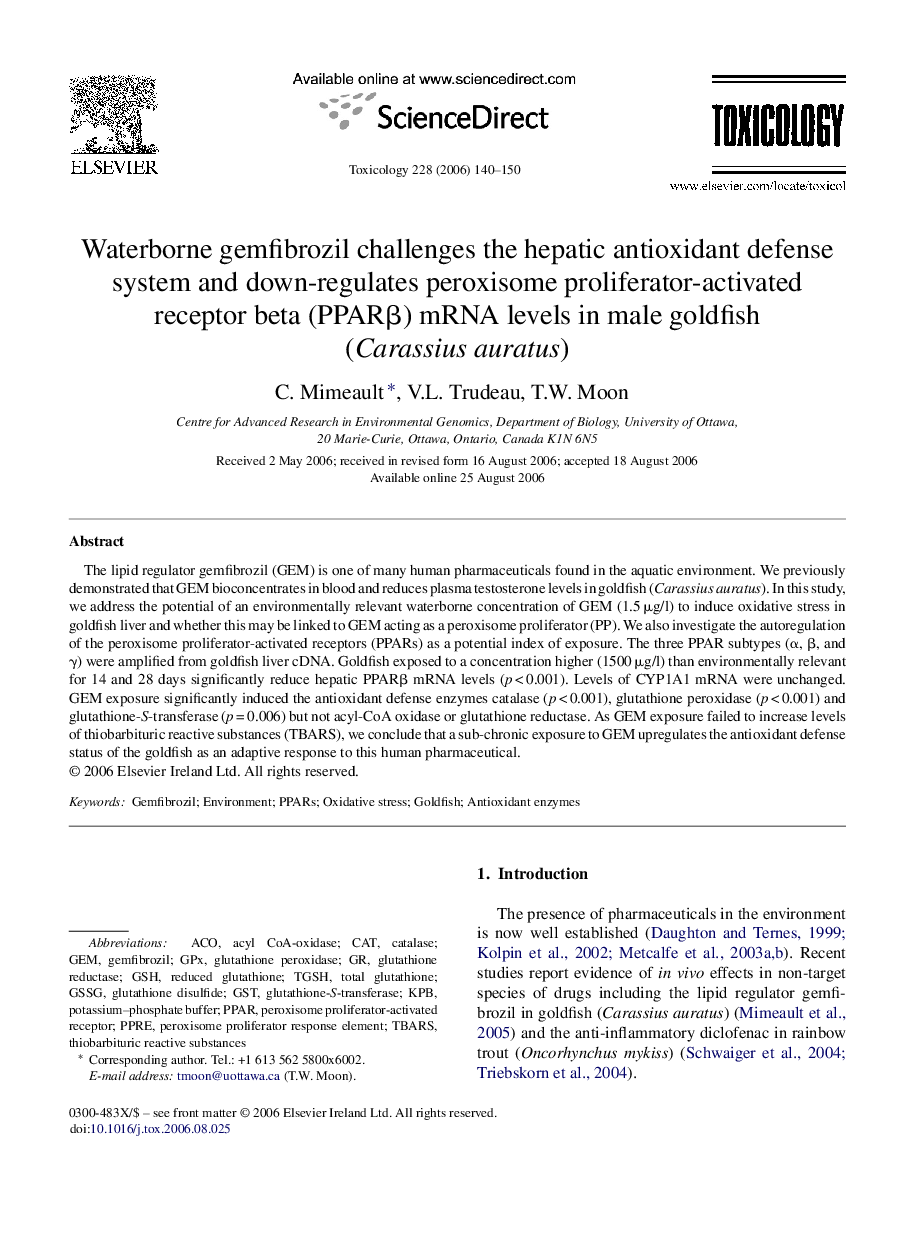| کد مقاله | کد نشریه | سال انتشار | مقاله انگلیسی | نسخه تمام متن |
|---|---|---|---|---|
| 2597572 | 1562428 | 2006 | 11 صفحه PDF | دانلود رایگان |

The lipid regulator gemfibrozil (GEM) is one of many human pharmaceuticals found in the aquatic environment. We previously demonstrated that GEM bioconcentrates in blood and reduces plasma testosterone levels in goldfish (Carassius auratus). In this study, we address the potential of an environmentally relevant waterborne concentration of GEM (1.5 μg/l) to induce oxidative stress in goldfish liver and whether this may be linked to GEM acting as a peroxisome proliferator (PP). We also investigate the autoregulation of the peroxisome proliferator-activated receptors (PPARs) as a potential index of exposure. The three PPAR subtypes (α, β, and γ) were amplified from goldfish liver cDNA. Goldfish exposed to a concentration higher (1500 μg/l) than environmentally relevant for 14 and 28 days significantly reduce hepatic PPARβ mRNA levels (p < 0.001). Levels of CYP1A1 mRNA were unchanged. GEM exposure significantly induced the antioxidant defense enzymes catalase (p < 0.001), glutathione peroxidase (p < 0.001) and glutathione-S-transferase (p = 0.006) but not acyl-CoA oxidase or glutathione reductase. As GEM exposure failed to increase levels of thiobarbituric reactive substances (TBARS), we conclude that a sub-chronic exposure to GEM upregulates the antioxidant defense status of the goldfish as an adaptive response to this human pharmaceutical.
Journal: Toxicology - Volume 228, Issues 2–3, 7 December 2006, Pages 140–150